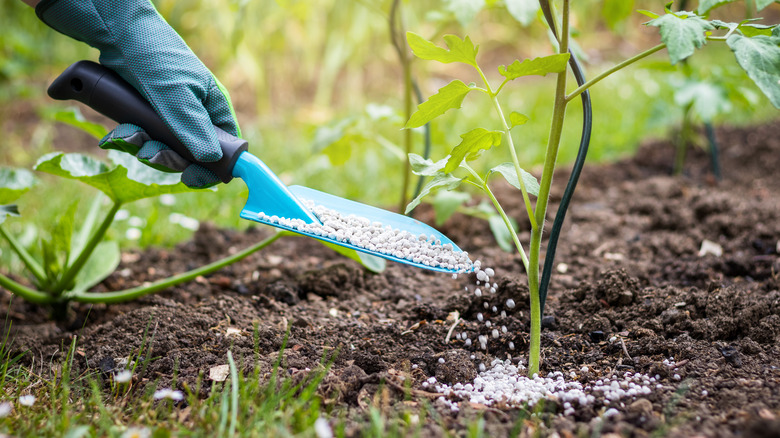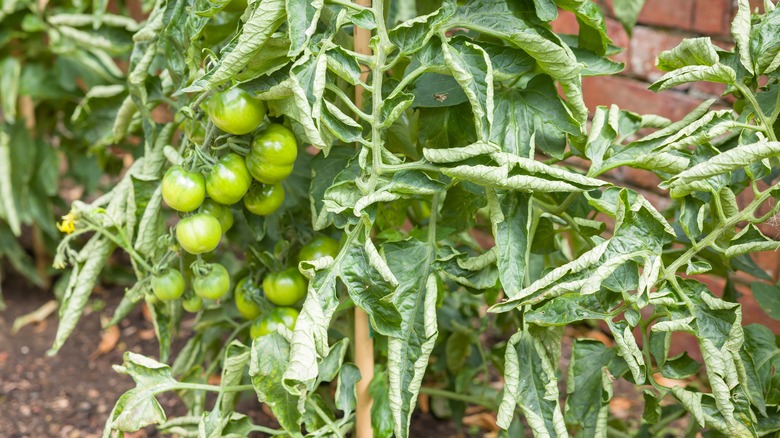The Common Fertilizer Mistake That's Sure To Hinder Your Tomato Harvest
If fertilization helps plants grow, then it can only benefit your tomato plants, right? Not exactly. Overfertilizing is a common mistake that gardeners make, especially with nitrogen. Because precipitation and watering tend to wash nitrogen away, annual application can be important. However, the trick is to not give your tomato plants too much of a good thing.
Too much nitrogen can lead to excessive vine growth and leaves that become twisted or curled. Of greatest concern, excess nitrogen can reduce or delay fruit production. You'll likely see lush, dark green leaves on your plant but few precious tomatoes. That robust foliage growth could also add to your headaches by attracting aphids, a common tomato pest. And, it can contribute to blossom end rot by distributing too much calcium to the leaves since the nitrogen spurs leaf production instead of yielding fruit. Young plants are particularly sensitive to extra nitrogen and can be burned from overfertilizing.
Stop overfertilizing and adjust fertilizing practices
Can you nurse your overfertilized plants back to optimal health? Maybe. If your plants are suffering from overfertilization, immediately stop applying fertilizer. Locate and remove any visible fertilizer powder around the plants. It's important to flush the tomato garden area with plenty of water and continue saturating it every few days until the plants look like they're recovering. You can also replace a layer of the topsoil around the plants.
The next time you grow tomatoes, start by getting your soil tested to see what nutrients are deficient. Keep in mind that balance and timing are key in productive tomato fertilization. The more mature your tomato plant is, the less it needs fertilizer. Because nitrogen's role is boosting growth, consider not fertilizing newly planted tomatoes until they begin to grow and are building strong roots. Look for products with a low nitrogen number, and establish a program to fertilize tomatoes depending on their growth stages. Apply fertilizer a few times during the season, tapering off as the plants start setting tomatoes. Be sure, of course, to follow fertilizer package instructions.
Consider the possibility that you may not need fertilizer at all. If you have amended your soil with organic materials, such as by making your own DIY compost, your soil may offer enough nutrients for fruit-producing tomato plants. Some gardeners prefer to wait and see, fertilizing only when plants show signs of needing nutrients. Whatever level of fertilization you choose, monitor your plants' nutrient needs as part of a program aimed at growing the best tomatoes in your garden.

